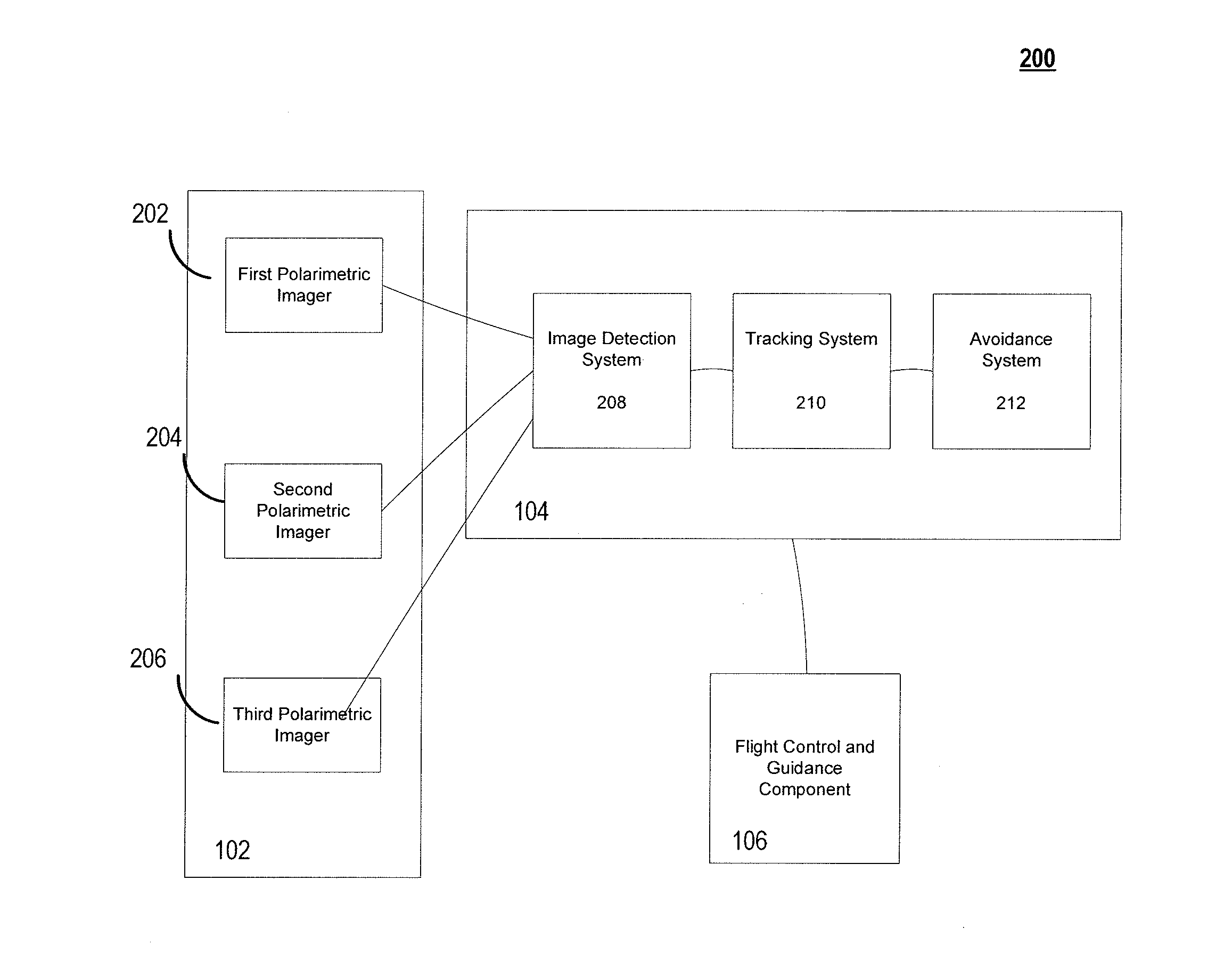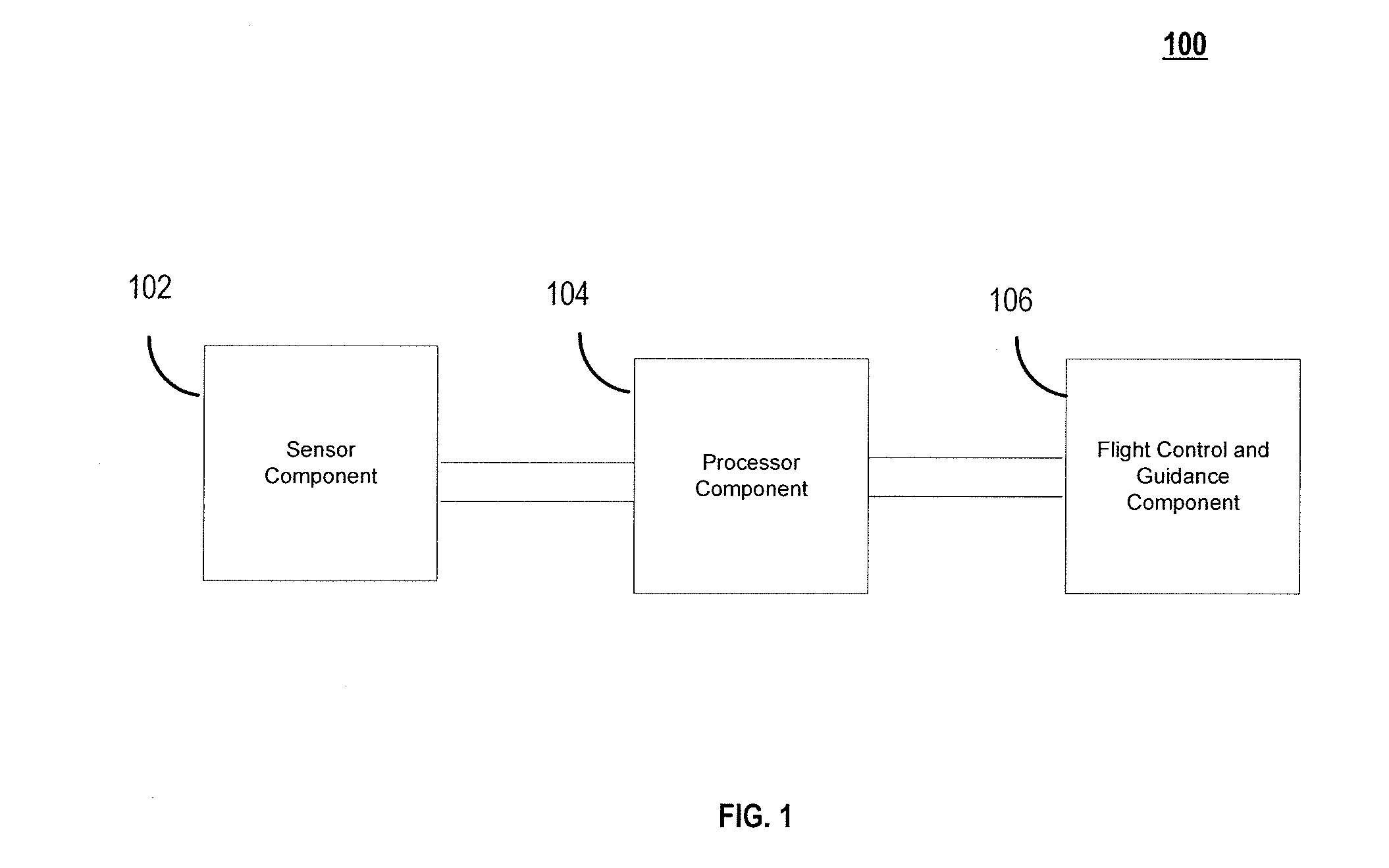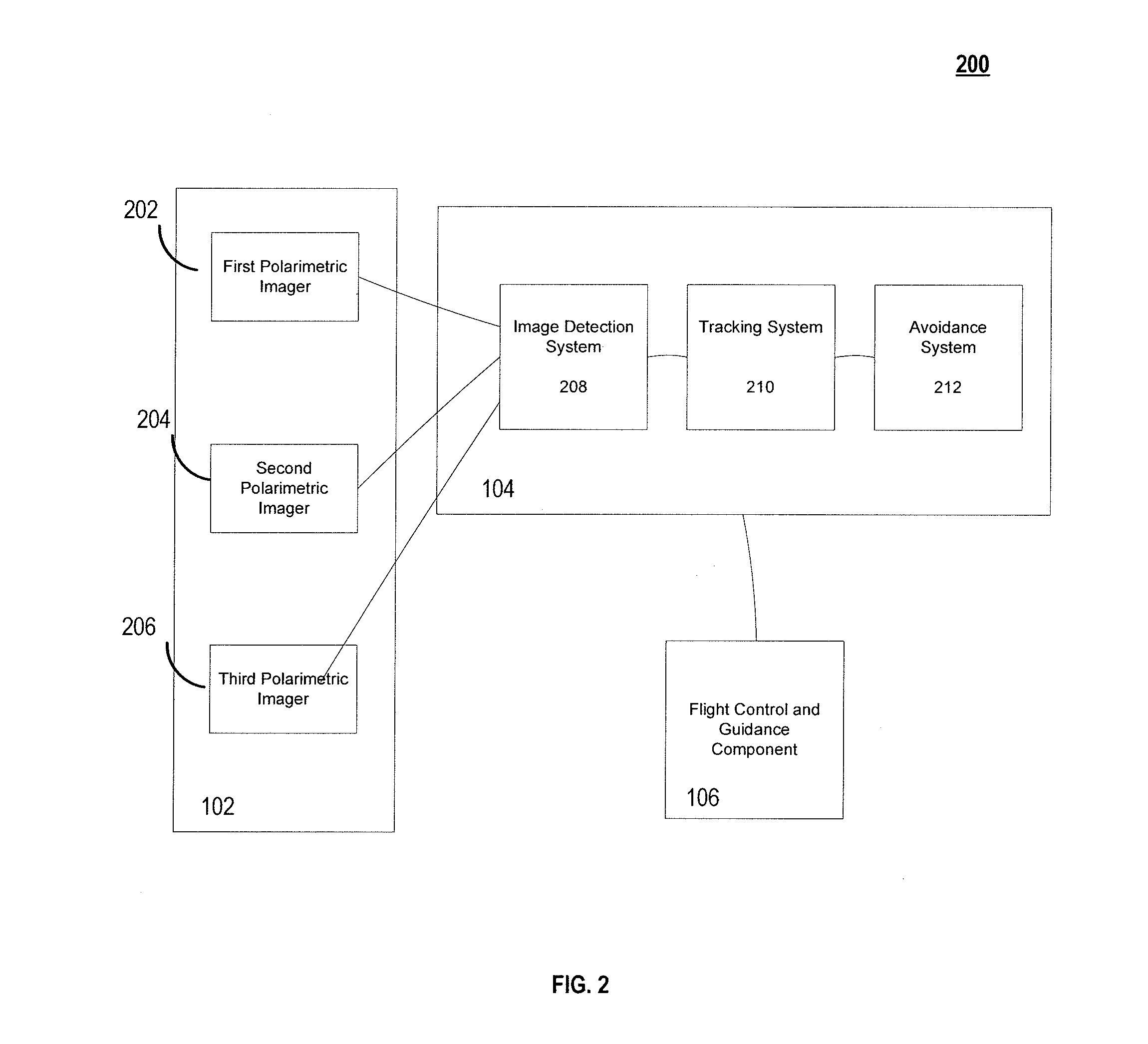Utilizing Polarization Differencing Method For Detect, Sense And Avoid Systems
a technology of polarization and differencing, applied can solve the problems of time-consuming process, system and subsystems for providing, and cannot be used in the field of unmanned vehicles, and achieve the effect of avoiding collisions and detecting systems that are not equipped with transponder-based collision avoidance systems
- Summary
- Abstract
- Description
- Claims
- Application Information
AI Technical Summary
Benefits of technology
Problems solved by technology
Method used
Image
Examples
Embodiment Construction
[0029]Various exemplary embodiments are discussed in detail below including a preferred embodiment. While specific implementations are discussed, it should be understood that this is done for illustration purposes only. A person skilled in the relevant art can recognize that the systems, methods and features provided herein may be used without parting from the spirit and scope of the invention. Furthermore, any and all references cited herein shall be incorporated herein by reference in their respective entireties.
Exemplary Embodiments
[0030]A wide assortment of unconventional vehicles may be employed in accordance with the present embodiments. Included are Unmanned Aircraft Systems (UAS), Unmanned Aircraft (UA), UAV, RPV (Remote-Piloted Vehicle), Unmanned Air Combat Vehicle (UCAV), Remotely Operated Aircraft (ROA), drones, rockets, missiles, and the like. Though used interchangeably, RPV refers to anything controlled externally by remote control, while UAV generally describes an air...
PUM
 Login to View More
Login to View More Abstract
Description
Claims
Application Information
 Login to View More
Login to View More - R&D
- Intellectual Property
- Life Sciences
- Materials
- Tech Scout
- Unparalleled Data Quality
- Higher Quality Content
- 60% Fewer Hallucinations
Browse by: Latest US Patents, China's latest patents, Technical Efficacy Thesaurus, Application Domain, Technology Topic, Popular Technical Reports.
© 2025 PatSnap. All rights reserved.Legal|Privacy policy|Modern Slavery Act Transparency Statement|Sitemap|About US| Contact US: help@patsnap.com



